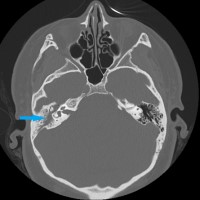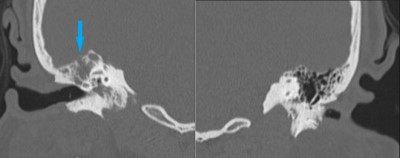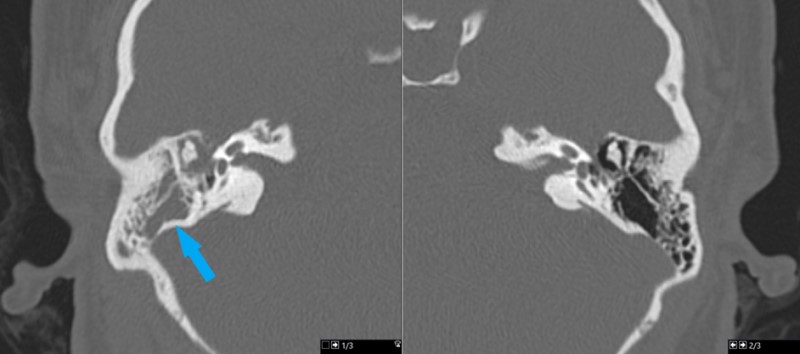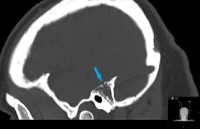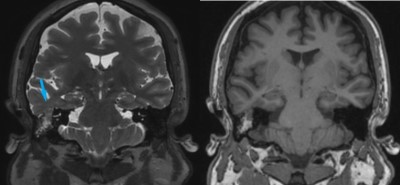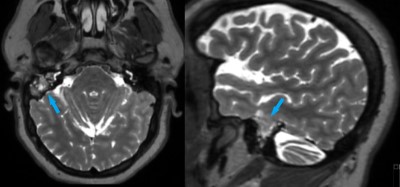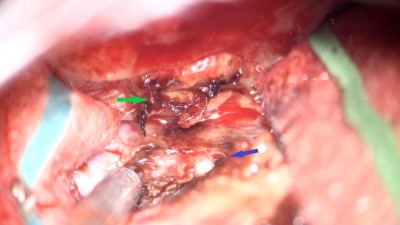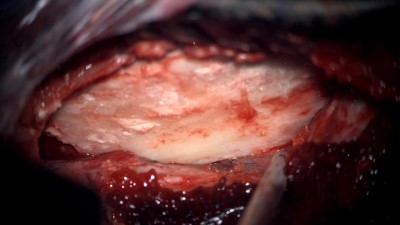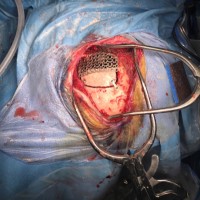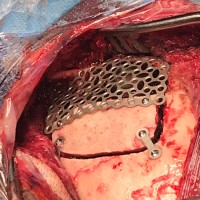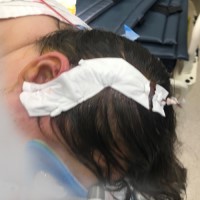This is a 28 year old female who presents with complaint of right-sided hearing loss and sense of fullness within her right ear.
Her exam is consistent with conductive hearing loss in right ear.
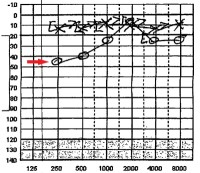
Audiogram demonstrating right-sided hearing loss. Normal, left-sided hearing is demonstrated by straight line of X’s across top of image. Right-sided hearing is represented by a series of O’s (red arrow). The drop of the line from the 10dB line is the amount of hearing lost; in this case 45dB at 250Hz and 25dB at 1000Hz & 4000Hz.
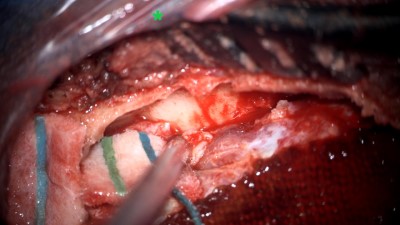
Intraoperative photo demonstrating the operative approach. A right temporal craniotomy has been made and the covering of the brain, the dura mater, is being dissected off of the base of the skull. Orientation: this is the right side of the head; the ear is just off the top of the frame (green star(*)), the nose is to the left, the back of the head the right, and the top of the head is toward the bottom.
Intraoperative video demonstrating the dissection of the encephalocele. Note the band of tissue extending from the skull base defect on the top of the image through the dural defect toward the bottom. This is the encephalocele.
- All
- Pre-Op
- Intra-op
- Post-op


